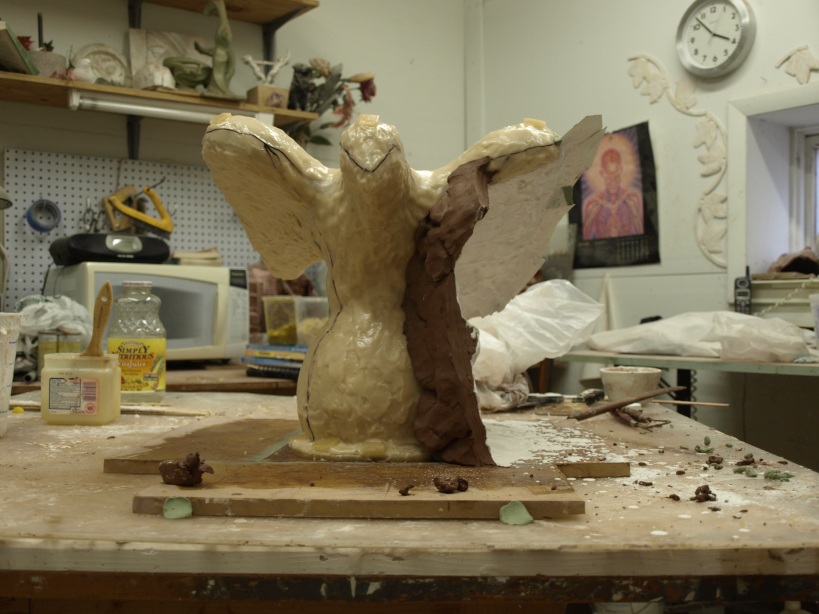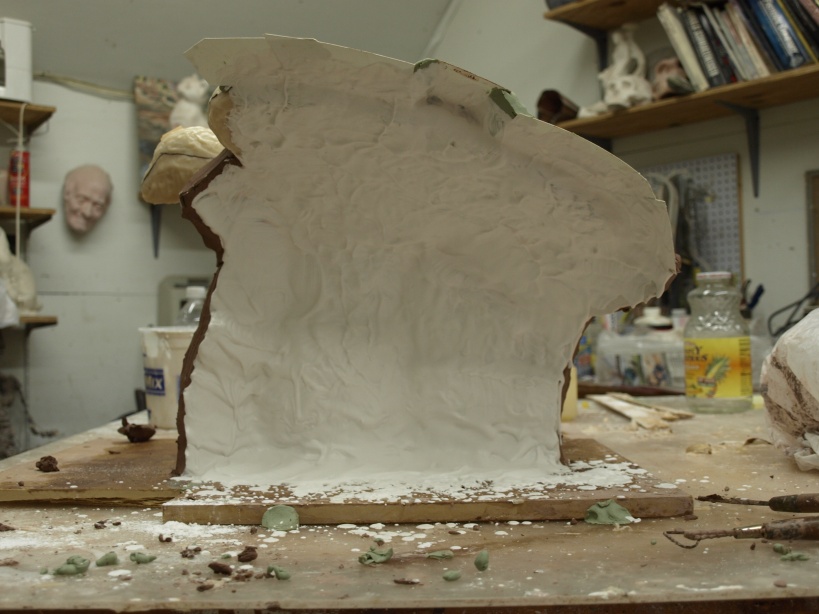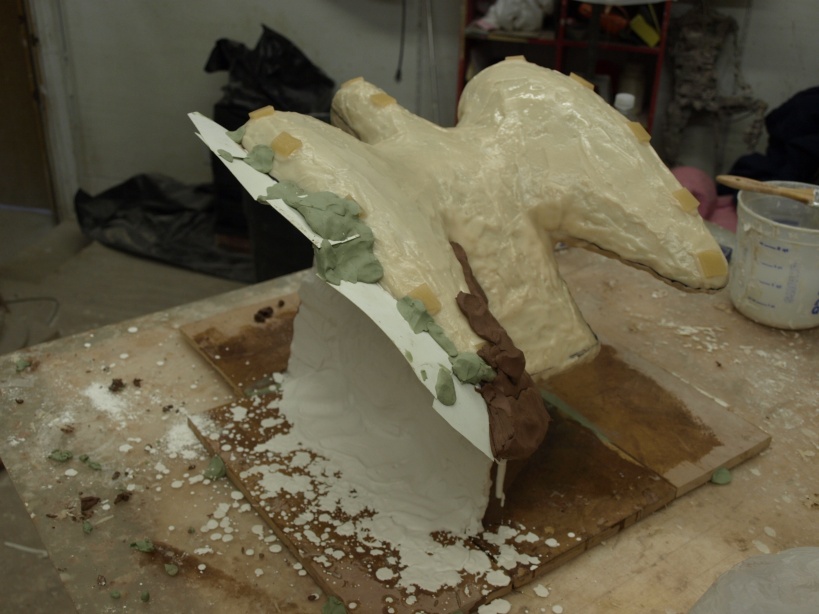
photo by Katherin York
Thanks so much to Katherine York for helping out with the process and documentation! Check out her beautiful photos linked above.

photo by Katherin York
Thanks so much to Katherine York for helping out with the process and documentation! Check out her beautiful photos linked above.
‘Wat’ is Thai for temple, and Salak Phet is the fishing village down the road from Salak Kok, where I am staying on Koh Chang.
 After my first week on Koh Chang I went down to Salak Phet to see the temple that was built over the last couple of years. I was very impressed with how elaborate the temple was for such a small town. The temple is surrounded by a giant snake, and each corner has a god representing north, south, east, and west. Here is the impressive entrance.
After my first week on Koh Chang I went down to Salak Phet to see the temple that was built over the last couple of years. I was very impressed with how elaborate the temple was for such a small town. The temple is surrounded by a giant snake, and each corner has a god representing north, south, east, and west. Here is the impressive entrance.
After walking once around the temple I noticed that some parts were still unfinished.
As a sculptor, this is actually a great opportunity to learn more about how the Thai sculptors work. It is a combination of modeling and sculpting cement, and mold making. Everything is added directly to a steel armature and built out. In the photo above, you can see the armature of the elephant still exposed, as well as the partially finished underlying form. When I walked into the inner courtyard I found more clues on how the sculptures are made.
It looks like for ornaments/elements of finer detail, small molds are made for fast application. For example, above you can see leftovers from the scales on the snake. I imagine it’s the same process for all of the little ornaments. They are applied to a built out form.
So I imagine that for the snake, first they made a long, rolling tube-cage out of steel rod, and then wrapped that in chicken wire, then applied the first coat of cement. After achieving a uniform shape, they then started adding the scales with little plaster molds for days and days… a little silly, but more direct, and probably faster for unique sculptures like these. There is also a second kind of white cement, which is kind of a mix between plaster and cement, which is used for the detailed top layer in places where the molds don’t fit, like when the snake bends around a corner. It’s very interesting to see, and I hope the sculptor comes back soon, although it looks like he left in a hurry…
I finally got some decent pictures from the exhibition in Budapest. The cars look great, and Hajnal will have them on display at the Kiscelli Museum until the and of May. All in all, it was a great trip and I really love the city.
The room where the full size car is installed is HUGE. It used to be a cathedral and the sound is amazing. It was great to finally see the car I was modelling in real life! I think I did okay working just from photos, but mine turned out to be a little more sporty than the real life version.
It snowed on the day of the exhibition, but we spent most of the day at the outdoor thermal baths with little snow flakes falling on our heads and creating a massive fog cloud over the pool. That was a great day. The picture really doesn’t do a justice, but here’s one.
Just imagine looking for your girlfriend in the fog, and getting a big handful of fat hairy Hungarian man instead… “Hellllooo you…OH GOD! I mean, excuse me!”
The End
The finishing touches.
DONE.
The exhibition is tomorrow night at the Kiscelli Museum in the Buda side of town. The space is huge, and I will have photos of the final installation soon.
Many thanks to Hajnal Nemeth for giving me the opportunity to collaborate on this project, and organizing such a great show!
Now that the silicone is done, and the plaster has been divided into workable parts (Mother-Mold = Schutzform), it’s time to get casting (cast = Abguss)! This thing is turning out to be a beast. I will need another set of hands to make the cast.
Photos by Nick
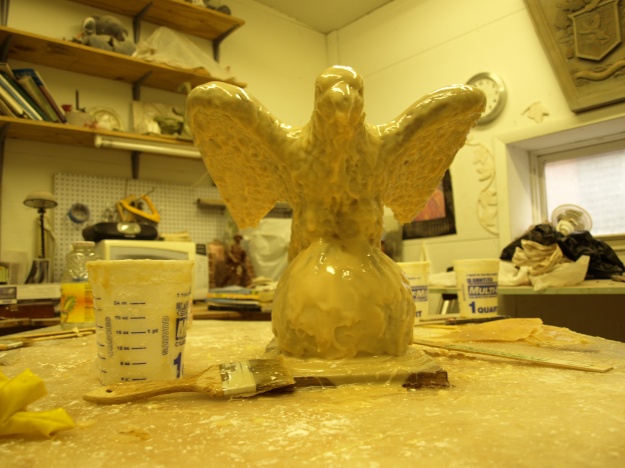
This is the rubber phase of the mold I am working on now of and eagle, modelled by Jerry himself at Barre Sculpture Studios.
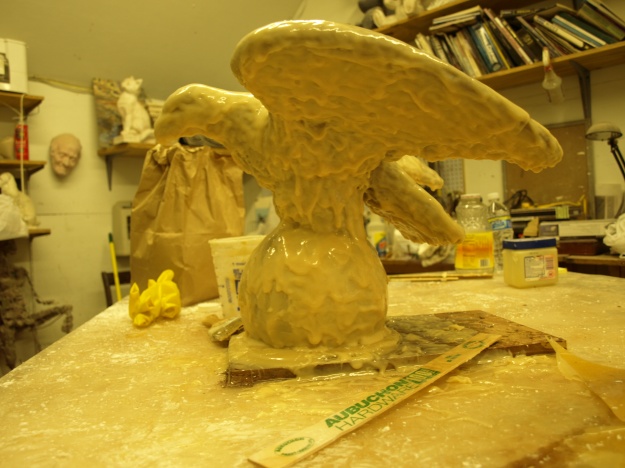
This is the first piece of the six piece (not including a key underneath the tail feathers) mother mold that will support the rubber when the original clay is taken out.
